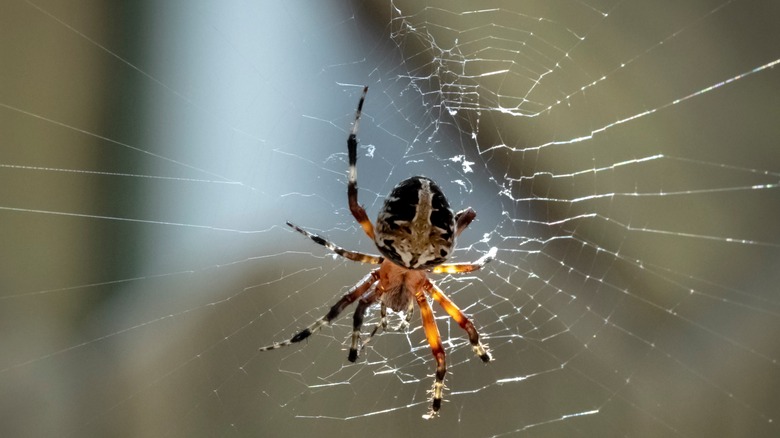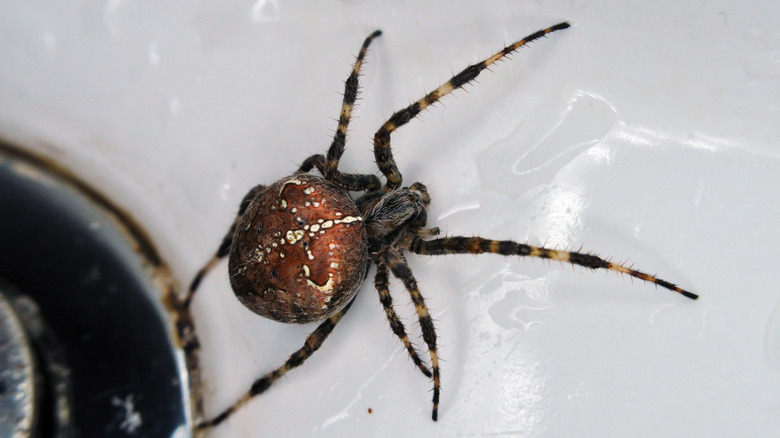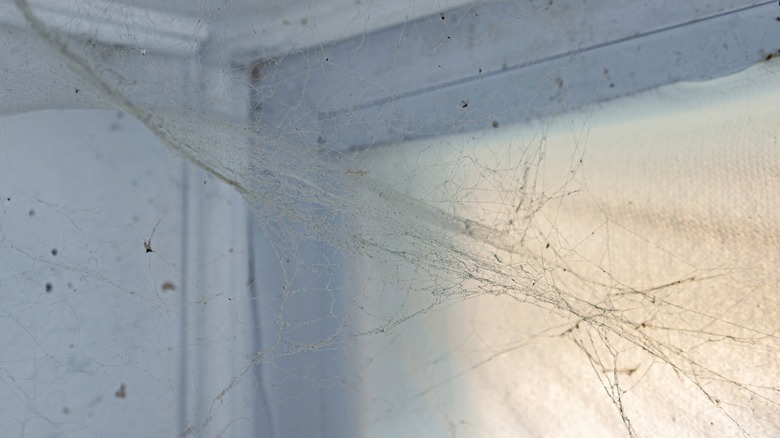You Might Want To Keep American House Spiders Around. Here's How To Spot Them
If your first instinct when you see a spider in your home is to find a way to squish it, you're not alone. As many as 15% of people have arachnophobia (per Cleveland Clinic). But you may want to rethink your plans and not automatically kill spiders that appear in your home. This goes double for the American house spider, also called Parasteatoda tepidariorum. This species of arachnid is one of the most common types of spiders you'll see in your home. It's basically harmless to humans, so there's no reason to eliminate it because of potential danger — and you may want to keep it around because of its ability to remove and control insect populations in your house.
In fact, it's easier to leave American house spiders alone when they're in your home because they generally try to avoid humans. They like to live in dark, damp areas, so you probably won't encounter them all that often unless you go looking for them. These are the same types of locations where insects like to spend their time in your house, so that's also where house spiders will hang out, looking to trap their next meal. Some of the most common types of insects that they like to eat include mosquitos, flies, wasps, ants, cockroaches, and grasshoppers. These are all insects that can be quite a nuisance for humans (especially in the house), so your resident arachnids are doing you a favor by eliminating them.
How to identify an American house spider
The American house spider shares a lot of characteristics with other types of arachnids, including a segmented body. The females' bodies range in length from about 3/16 of an inch to 5/16 of an inch and have a bulb-like shape; males are even smaller, with a flatter, more elongated shape. Most of these arachnids will have a brown body color that's almost pale or dull, but many of them also have subtle patterns of patches, spots, and lines on their bodies that help them hide from prey in dark areas. If you're close enough to get a good look, you'll also see their comb-footed legs, which means they have tiny hairs on the backs near the ends.
It's more likely that you'll first notice these spiders' presence by their thick, dense webs that often end up as tangles or curtains. They tend to collect dust after the arachnids abandon them or die, which is why many people refer to them as cobwebs. Should the webs pull loose from a wall, they tend to billow and move in the air, making them appear quite spooky. Because American house spiders tend to live close to each other, you may find that the webs of individual spiders may merge into one large mass. The thick web design is important, though, as they trap the insects the spiders eat.
Some of the disadvantages of living with American house spiders
For most people, the billowy, dusty cobwebs the American house spiders leave behind are the worst part of having them inside your home. Cleaning these cobwebs can be quite the chore, as they're often in hard-to-reach corners and near the ceiling. If the web is not dusty yet, or if you saw one of the spiders living in it within the last couple of days, you may not want to remove it so the spider can continue eating the pesky insects in your home.
Beyond the webs, perhaps the biggest problem with American house spiders is that they might occasionally bite you. These arachnids are not aggressive, and they don't seek out humans to try to bite them. However, if you scare them or if they believe they are in danger when you appear, they may bite. If you suffer a bite, you may have some pain in the area, along with swelling and itching, for up to a week. Occasionally, a person may be allergic to this type of bite, resulting in far more serious symptoms, including difficulty breathing (via Healthline). But a bite is very rare, as is an allergic reaction.
If you still would prefer to have American house spiders living outdoors rather than in your home, you can trap them and carry them outside. They'll likely build webs near windows or any overhangs along the exterior of your home or garage instead.


